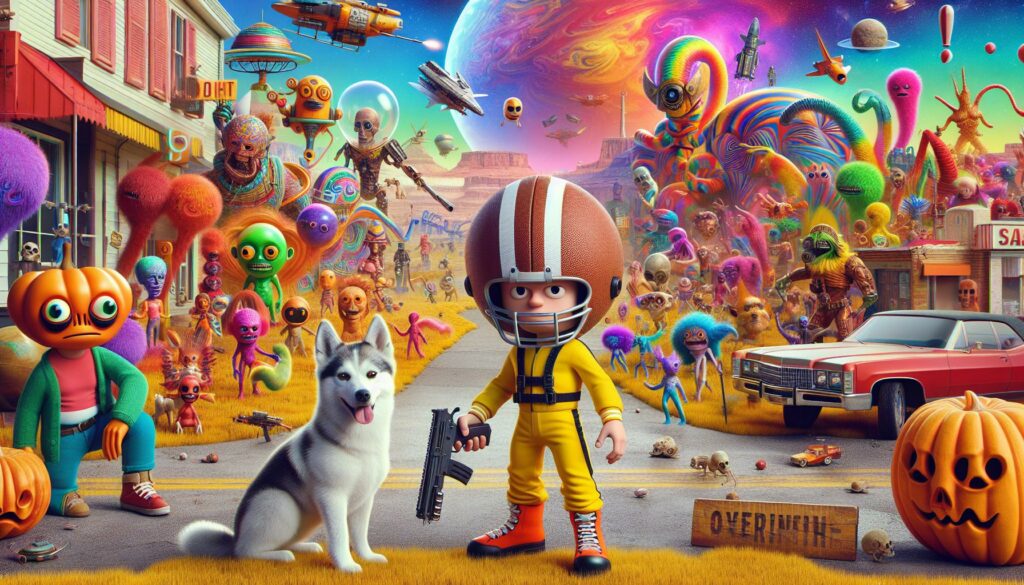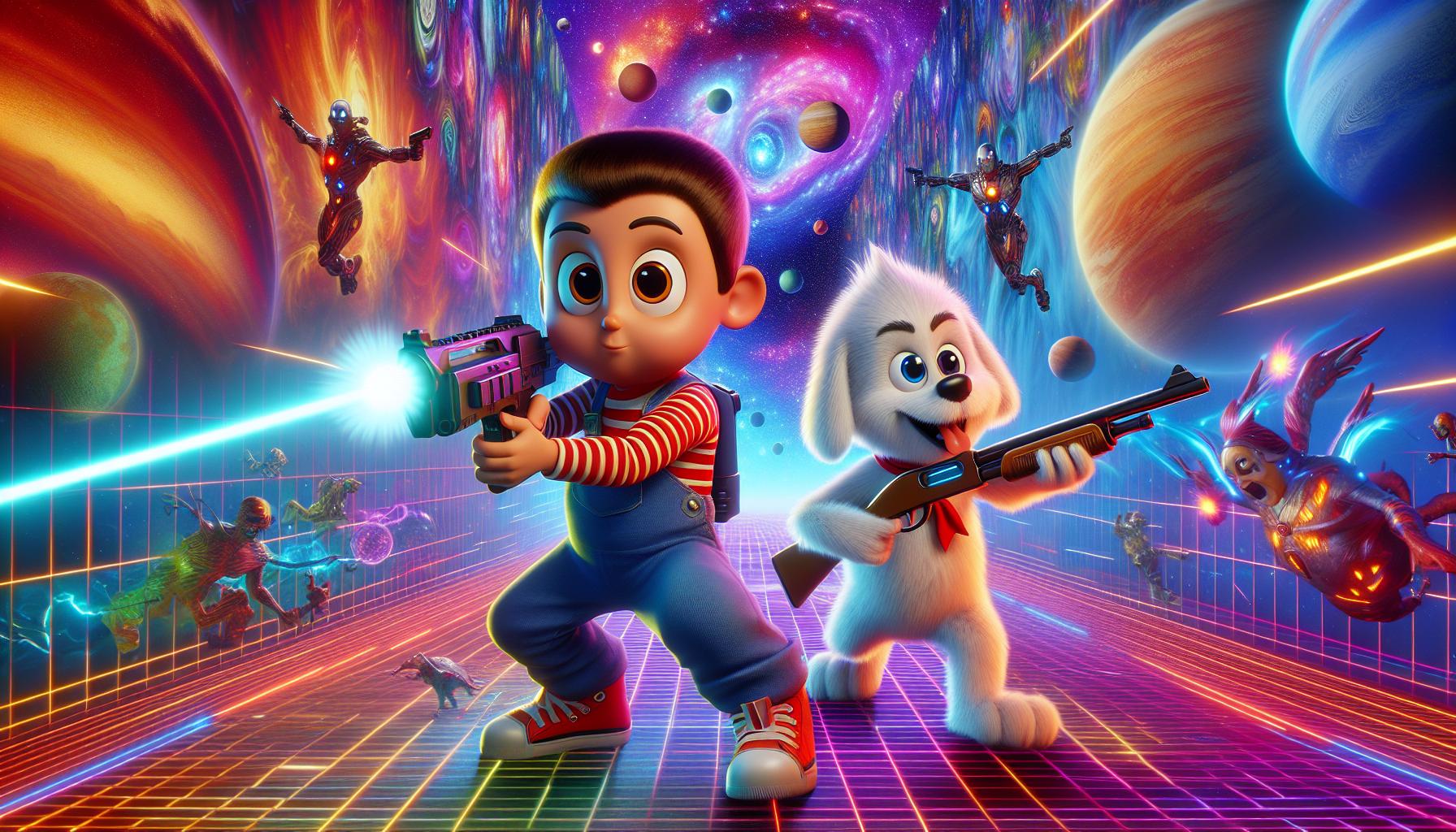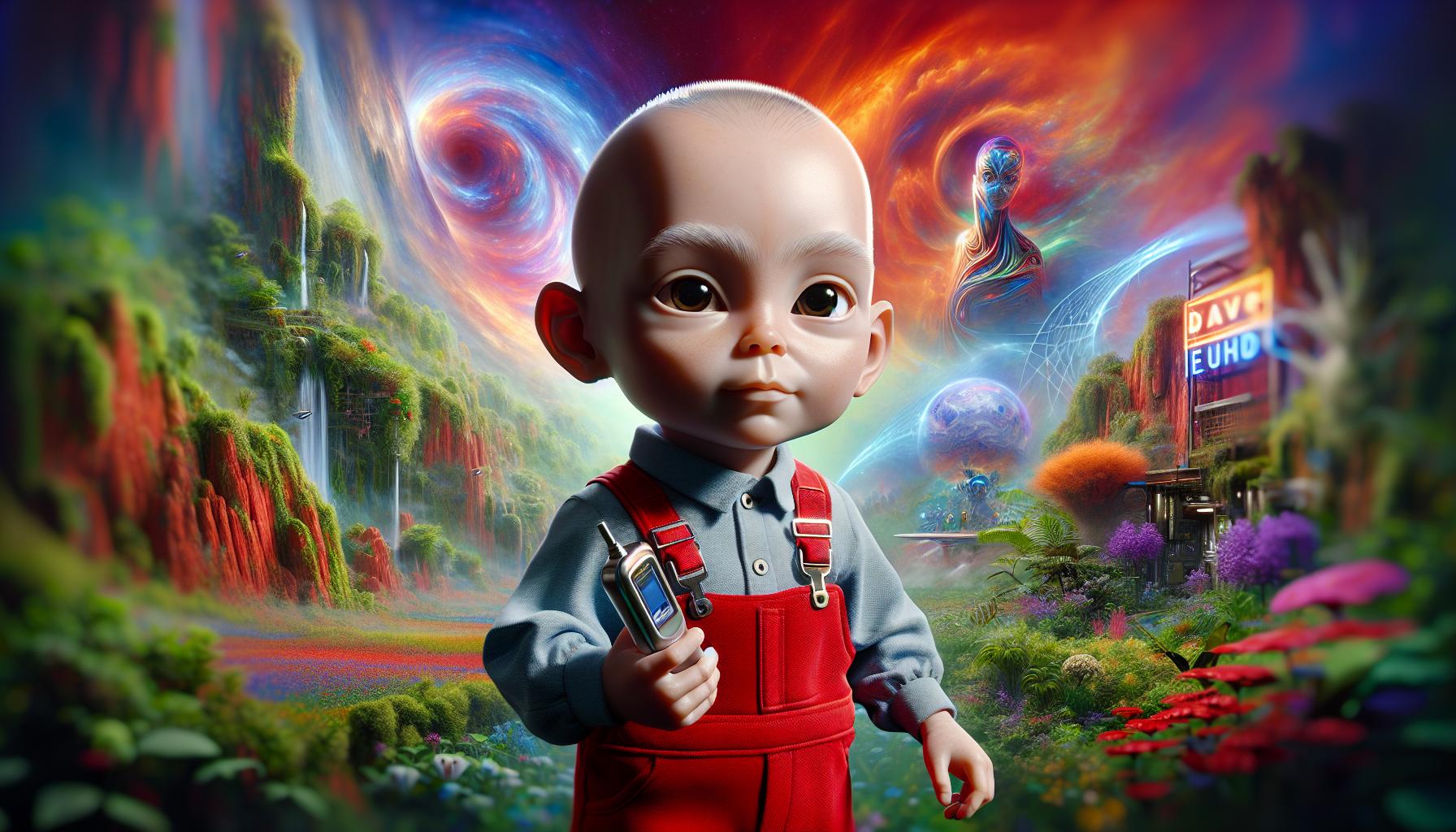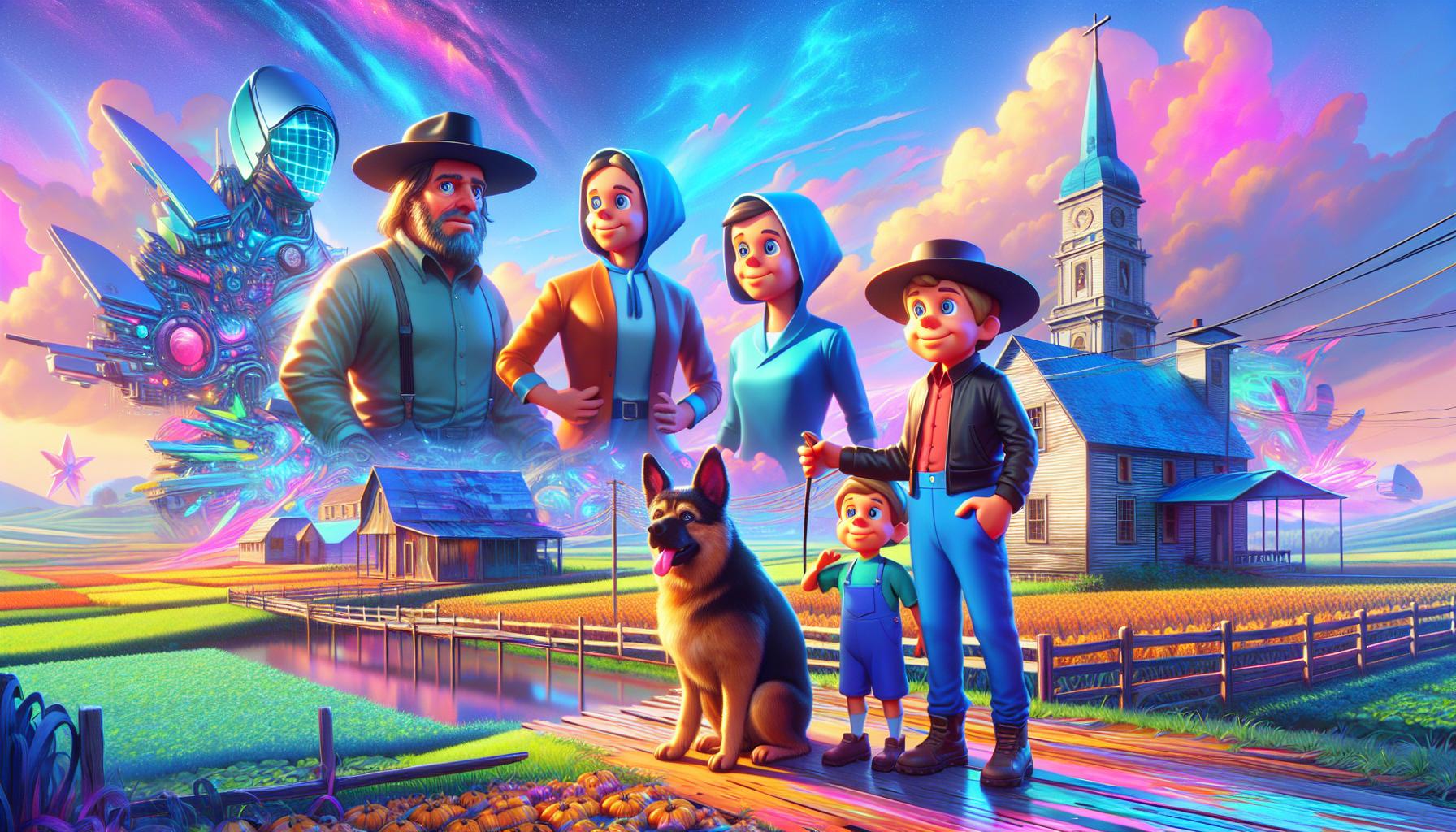Family Guy: Back to the Multiverse brings the outrageous humor and unforgettable characters from the hit animated series into an action-packed gaming adventure. Released in 2012, this third-person shooter follows the misadventures of Stewie and Brian Griffin as they traverse multiple parallel universes to stop Bertram’s evil scheme.
Drawing inspiration from the show’s beloved “Road to the Multiverse” episode, the game delivers a unique blend of comedy and chaos that’ll feel right at home for Family Guy fans. Players can step into the shoes of both characters while exploring bizarre alternate realities filled with familiar faces and references from the series. From an apocalyptic world ruled by handicapped people to a universe where chickens dominate humanity, each dimension offers its own twisted take on the Family Guy universe.
Family Guy: Back to the Multiverse
Family Guy: Back to the Multiverse features storylines inspired by the TV show’s popular episode “Road to the Multiverse.” Heavy Fire Games developed this third-person shooter in collaboration with Activision, releasing it for PlayStation 3 Xbox 360 PC platforms in 2012.
Players control Stewie or Brian Griffin through 10 distinct parallel universes. Each universe presents unique challenges environments including an Amish world a handicapped universe an alternate reality ruled by evil chickens. The game incorporates signature Family Guy elements:
- Combat mechanics featuring both melee weapons ranged weapons
- Cooperative gameplay options for two players
- Character-specific abilities matching their TV show counterparts
- Unlockable costumes weapons upgrades through gameplay progression
The game’s core mechanics integrate these key gameplay elements:
| Feature | Description |
|---|---|
| Combat System | Dual-wielding weapons customizable loadouts special abilities |
| Multiplayer Modes | 4-player competitive matches 2-player story campaign |
| Universe Types | 10 parallel dimensions with distinct themes enemies |
| Character Stats | Health shields movement speed weapon proficiency |
The narrative follows Stewie Brian as they chase Bertram across dimensions. Each location incorporates authentic Family Guy humor through:
- Cutscenes featuring original voice acting from the TV show cast
- Environmental storytelling with series references easter eggs
- Character interactions matching their established personalities
- Mission objectives based on running gags from the show
- Peter Griffin as an AI companion
- Giant Chicken as a recurring boss
- Cleveland Quagmire as mission givers
- Evil Stewie variants as dimensional antagonists
Gameplay Mechanics and Features
Family Guy: Back to the Multiverse employs a dynamic third-person shooter gameplay system with both single-player and cooperative modes. Players traverse through parallel dimensions while engaging enemies using a combination of ranged combat and unique character abilities.
Combat and Weapons System
The combat system features both melee attacks and ranged weaponry tailored to each character’s personality. Stewie wields advanced technology including laser guns, explosive devices and his signature mind control ray. Brian relies on conventional firearms like pistols, shotguns and assault rifles. Players collect ammunition and health pickups throughout levels while engaging diverse enemy types from evil chickens to alternate universe counterparts. The targeting system enables precise aiming with a lock-on feature for moving targets. Environmental objects provide tactical cover during firefights while destructible elements add strategic depth to combat encounters.
Character Abilities and Upgrades
Stewie and Brian possess distinct abilities that evolve through an upgrade system. Stewie’s scientific genius grants him access to teleportation devices, force fields and combat drones. Brian utilizes disguises, charm abilities and temporary invulnerability through his martini power-ups. Players earn upgrade points by completing missions and collecting multiverse crystals. These points unlock enhanced versions of existing abilities, increased health capacity and new combat moves. Each character’s skill tree focuses on their strengths – Stewie excels at gadgets and area control while Brian specializes in close combat and crowd manipulation. Ability combinations create unique strategic opportunities in both solo and cooperative play.
Story and Plot Elements
The narrative of Family Guy: Back to the Multiverse centers on Stewie Griffin’s quest to stop his evil half-brother Bertram from assembling an army across parallel universes. The storyline integrates classic Family Guy humor with dimension-hopping adventures.
Multi-Dimensional Adventures
Stewie discovers Bertram has survived their previous encounter by escaping to alternate dimensions. Each universe presents distinct scenarios ranging from an Amish paradise to a world dominated by hostile chickens. Players navigate through 10 parallel realities where familiar locations take unexpected turns, such as a dystopian Quahog ruled by handicapped people or a universe where Christianity never existed. The story progresses through interconnected missions as Stewie and Brian track Bertram’s trail across dimensions while preventing his forces from invading their home universe.
Notable Characters and References
The game features authentic voice acting from the TV show’s cast including Seth MacFarlane voicing multiple characters. Peter Griffin appears as an occasional support character offering comedic commentary during missions. Recurring antagonists like Ernie the Giant Chicken make appearances as boss battles. Death, Cleveland, Quagmire, and Joe emerge throughout different dimensions in altered forms reflecting each universe’s unique properties. The game incorporates numerous Easter eggs referencing popular Family Guy episodes including cutaway gags, running jokes from the series, and iconic locations like The Drunken Clam reimagined across different realities.
Graphics and Sound Design
Family Guy: Back to the Multiverse adopts a visual and audio presentation that mirrors the television show’s distinctive style. The game’s aesthetic faithfully recreates the series’ signature look while incorporating advanced lighting and particle effects.
Visual Style and Animation
The game features cel-shaded graphics that capture the cartoon’s distinctive aesthetic, with character models matching their television counterparts in detail and proportion. Environmental designs span multiple parallel universes, each displaying unique art direction from the Amish-themed levels’ rustic simplicity to futuristic dystopian settings’ neon-lit landscapes. Character animations maintain the show’s comedic timing through fluid movements, exaggerated expressions and smooth transitions between actions. The visual effects include dynamic lighting systems, detailed particle effects for weapons and environmental interactions that enhance the cartoon-style presentation.
Voice Acting and Music
The original Family Guy cast delivers authentic voice performances, with Seth MacFarlane performing multiple roles including Stewie, Brian and Peter Griffin. Each character’s dialogue maintains the show’s signature delivery and timing, complemented by situation-specific quips during gameplay. The soundtrack combines orchestral pieces with familiar Family Guy musical cues, creating atmospheric background tracks for each universe. Sound effects enhance combat sequences with impactful weapon sounds, while environmental audio adds depth to each distinct dimension through ambient noises like crowd chatter in populated areas or eerie silence in dystopian worlds.
Multiplayer Experience
Family Guy: Back to the Multiverse offers multiple ways to play with friends through local split-screen gameplay. Players engage in both cooperative story missions and competitive matches across various parallel universe settings.
Co-op Campaign
The cooperative campaign allows two players to control Stewie and Brian simultaneously through local split-screen play. Player one takes control of Stewie with his high-tech weaponry while player two commands Brian with conventional firearms. Each character brings unique abilities to combat situations: Stewie deploys mind control rays and advanced gadgets whereas Brian excels at close-quarters combat and crowd control. The shared experience includes synchronized cutscenes mission objectives and dynamic difficulty scaling based on player performance. Both players collect separate ammunition health pickups and upgrade points enabling individual progression through character-specific skill trees.
Versus Modes
The competitive multiplayer includes 6 distinct game modes across 10 multiverse-themed maps. Classic modes feature Team Deathmatch Capture the Flag King of the Hill plus unique variants like Multiverse Mayhem where players battle using dimension-specific weapons. Each map incorporates elements from parallel universes such as the Amish world’s horse-drawn vehicles or the handicapped universe’s modified terrain. Players select from 8 playable characters including Peter Lois Chris Meg Joe Quagmire plus unlockable variants. The multiplayer supports up to 4 players in local split-screen matches with customizable match settings weapon loadouts and time limits.
Game Performance and Technical Aspects
Family Guy: Back to the Multiverse operates at 30 frames per second on PlayStation 3 and Xbox 360 consoles, with occasional frame drops during intense combat sequences. The PC version supports higher framerates up to 60 FPS with adjustable graphics settings for resolution, texture quality and anti-aliasing.
Loading times between multiverse transitions average 15-20 seconds on consoles and 5-10 seconds on PC with SSD storage. The game utilizes automated checkpoints that save progress every 3-5 minutes during missions, preventing significant progress loss.
| Technical Specifications | Console | PC |
|---|---|---|
| Frame Rate | 30 FPS | Up to 60 FPS |
| Resolution | 720p | Up to 1080p |
| Loading Times | 15-20s | 5-10s |
| Storage Required | 4GB | 8GB |
The game engine handles physics interactions for environmental objects like boxes, barrels and debris. Character collision detection remains consistent across platforms, though occasional clipping issues emerge during rapid movement sequences.
Audio processing supports stereo and 5.1 surround sound configurations. Voice lines play without delay or sync issues. Sound effects maintain proper spatial positioning relative to the camera view.
Performance optimization varies across platforms:
- Console versions prioritize stable framerates over visual fidelity
- PC settings allow customization of shadow quality, draw distance and particle effects
- Split-screen multiplayer reduces visual quality to maintain performance
- Loading screen tips display during level transitions
- Auto-save features minimize progress loss from system crashes
The game’s memory management system efficiently loads assets for each universe while purging unused resources to prevent system slowdown. Network code handles local multiplayer with minimal input lag between controllers.
Future of Gaming Universe
“Family Guy: Back to the Multiverse” delivers a unique gaming experience that successfully captures the essence of the beloved animated series. The game’s blend of authentic humor character-driven gameplay and diverse parallel universes creates an engaging adventure for both Family Guy fans and action game enthusiasts.
While the gameplay mechanics might not revolutionize the third-person shooter genre its faithful representation of the show’s signature elements and inclusion of original voice acting makes it a memorable addition to the Family Guy franchise. The multiplayer options and character progression systems add depth to what’s ultimately an entertaining journey through the multiverse with Stewie and Brian.




